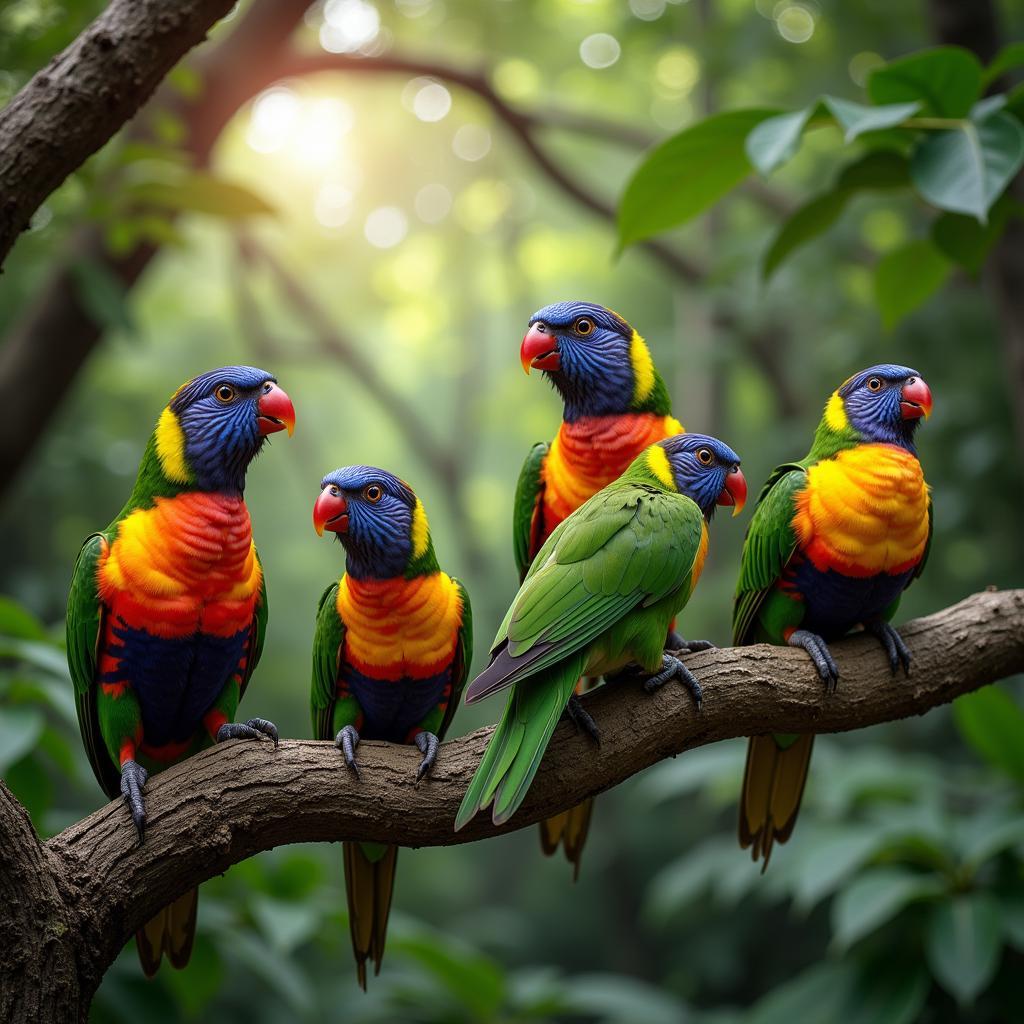Exploring the Rhythms of the Wild: African Animal Music
African Animal Music isn’t about orchestrated symphonies, but a rich tapestry of natural sounds that communicate, warn, and even woo. From the rhythmic drumming of gorillas to the complex melodies of songbirds, the African wilderness pulses with a unique soundscape. african intro These sounds aren’t just random noise; they are intricate forms of communication, vital for survival and social interaction.
The Language of the Wild: How Animals Use Sound in Africa
Animals across Africa use a variety of sounds for different purposes. The deep rumble of a lion’s roar, for instance, can be heard for miles, marking territory and asserting dominance. Conversely, the soft chirps of a mother bird to her chicks are intimate and nurturing. Understanding these diverse vocalizations offers a glimpse into the complex social structures and survival strategies of African wildlife.
Many animals utilize sound for mating rituals. The elaborate courtship displays of birds, often accompanied by intricate songs and dances, are a prime example. Male birds use their vocal talents to attract females and demonstrate their fitness as potential mates. Similarly, the haunting calls of certain antelope species during mating season resonate through the savannah, drawing females from afar.
Decoding the Drumbeats: Primate Communication Through Music
Primates, like gorillas and chimpanzees, are known for their percussive communication. Chest-beating by gorillas serves as a powerful display of strength and can be heard resonating through dense forests. Chimpanzees use a combination of vocalizations and drumming on tree roots to communicate with each other, often conveying information about food sources or potential threats. This intricate system of communication highlights the intelligence and social complexity of these fascinating creatures.
The rhythmic patterns they create are more than just noise. They convey information about their emotional state, social standing, and even the location of food sources. Researchers have even identified distinct “dialects” in the drumming patterns of different chimpanzee communities, suggesting a level of cultural transmission of these sonic traditions.
Beyond the Calls: The Musicality of African Wildlife
While many associate animal sounds with simple calls or warnings, there’s a growing appreciation for the inherent musicality in the natural world. The complex melodies of African songbirds, with their varying pitches and rhythms, are a testament to the beauty and complexity of animal vocalizations. african forest peoples life These songs, often used for territorial defense or mate attraction, demonstrate a remarkable level of acoustic sophistication.
Dr. Anika Moosa, a leading expert in bioacoustics, explains, “The intricate vocalizations of African birds are not simply instinctive responses. They demonstrate a remarkable level of learning and adaptation, with individual birds developing unique variations on their species’ song.”
 African Bird Songs: The Music of the Wild
African Bird Songs: The Music of the Wild
The Impact of Human Activity on African Animal Music
Unfortunately, the rich soundscape of the African wilderness is increasingly threatened by human activity. Habitat loss, noise pollution, and hunting disrupt animal communication patterns and can have devastating consequences for wildlife populations. Conservation efforts are crucial to preserve these unique sonic ecosystems and ensure that the music of the African wild continues to thrive for generations to come. african ankle shakers This includes protecting natural habitats and mitigating noise pollution.
Conclusion: Listening to the Symphony of the Savannah
African animal music offers a fascinating glimpse into the complex lives of the continent’s diverse wildlife. From the powerful roars of lions to the intricate melodies of songbirds, these sounds are vital for communication, survival, and social interaction. By understanding and appreciating the rhythms of the wild, we can gain a deeper appreciation for the interconnectedness of the natural world and the importance of conservation efforts. Let’s continue to explore and protect these unique sonic ecosystems, ensuring that the music of African animals continues to resonate across the savannah and beyond.
FAQ:
- What is bioacoustics? Bioacoustics is the study of animal sounds, including their production, transmission, and reception.
- How do elephants communicate? Elephants use low-frequency rumbles, some too deep for humans to hear, to communicate over long distances.
- Why is preserving animal communication important? Animal communication is essential for survival, mating, and social interactions. Disrupting these patterns can have severe consequences.
Other Questions We Have Covered:
- How has human activity impacted African wildlife communication?
- What are some examples of unique animal communication methods in Africa?
For further assistance, please contact us: Phone: +255768904061, Email: kaka.mag@gmail.com, or visit us at Mbarali DC Mawindi, Kangaga, Tanzania. We have a 24/7 customer service team.


